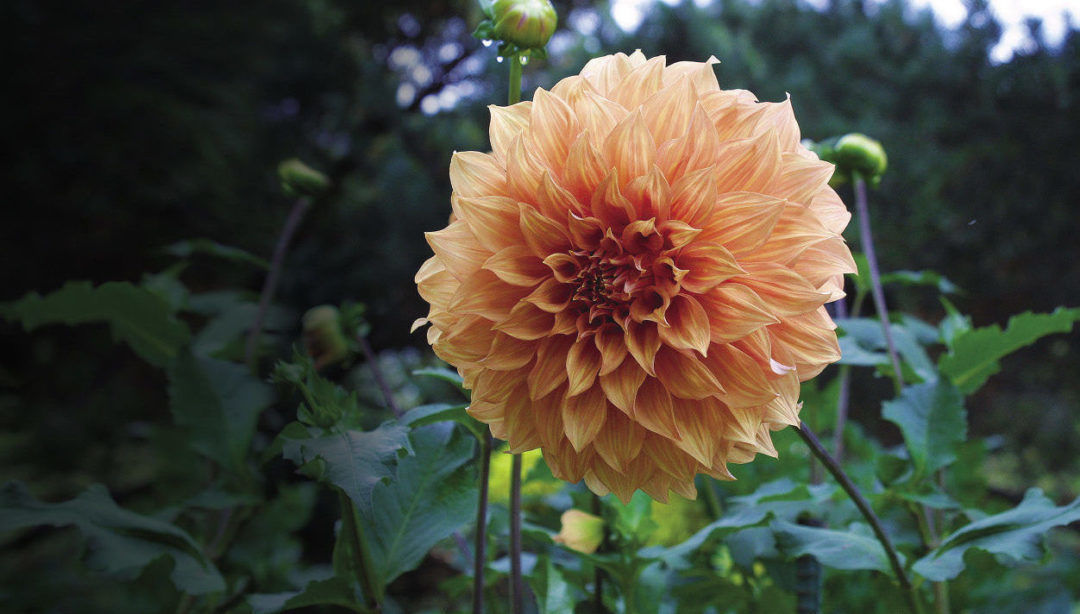
Think of the color peach, and what pops into your head? If you’re a child of the 1980s, visions of Miami Vice and taffeta bridesmaid dresses most likely spring to mind. But add this underappreciated color to your garden and you’ll be happily surprised to discover its lesser-known role as an ever-current garden problem solver. Peach is one of the freshest, most flexible colors you can incorporate into a garden design.
Successfully combining multiple shades of foliage and flowers in the garden can be challenging. If you’re planting a single container or bed, coming up with a color scheme is simple. But if you have an entire garden to fill, it is more difficult to add the range of colors and textures most gardeners desire while avoiding a chaotic mess. In a larger garden, peach takes on the role of peacemaker, blending seamlessly with foliage ranging from burgundy to silver and flowers from the hottest reds to the coolest blues. Better yet, making this unexpected color a garden star will set your garden apart from the predictable.
Gardeners who enjoy experimenting with bold colors and the latest designer plants should consider making peach a go-to choice for companion planting. Whether your garden is traditional or contemporary, colorful or quiet, think of peach as the polite garden guest that mingles gracefully, no matter how much its neighbors may try to upstage it.
Peach demystified
Poor peach suffers from a bit of an identity crisis. “Apricot,” “salmon,” “terra-cotta,” even “light coral” are all words that describe the same range of colors. Fruity descriptions are my favorite, however, as the delicate shades found on the skin of a juicy summer peach capture the essence of this color’s best quality: its ability to merge a continuum of warm to hot colors into a compelling new whole.
On the color wheel, peach isn’t one of the well-known players on the inner ring but, instead, is represented farther out as a less saturated version of orange. Viewed simply as a color chip or fabric swatch, it lacks the eye-popping appeal of its flashier parents: red and yellow. Fortunately for us gardeners, plants are not strictly confined to color-wheel definitions in the way that paint samples are. A close look at the petals of a peach-colored flower reveals a complex mix of warm tones from soft yellow to blush pink to the richer tints of orange and red. This ability to merge multiple colors into one effect is what makes peach so versatile as a companion plant.
Look at what peach can do!
Besides being the consummate mingler, this versatile color can play a multitude of other roles; calming companion, energizer, and star are just a few. Here are some examples of ways to use peachy flowers and foliage in your garden.
Tame a scene stealer
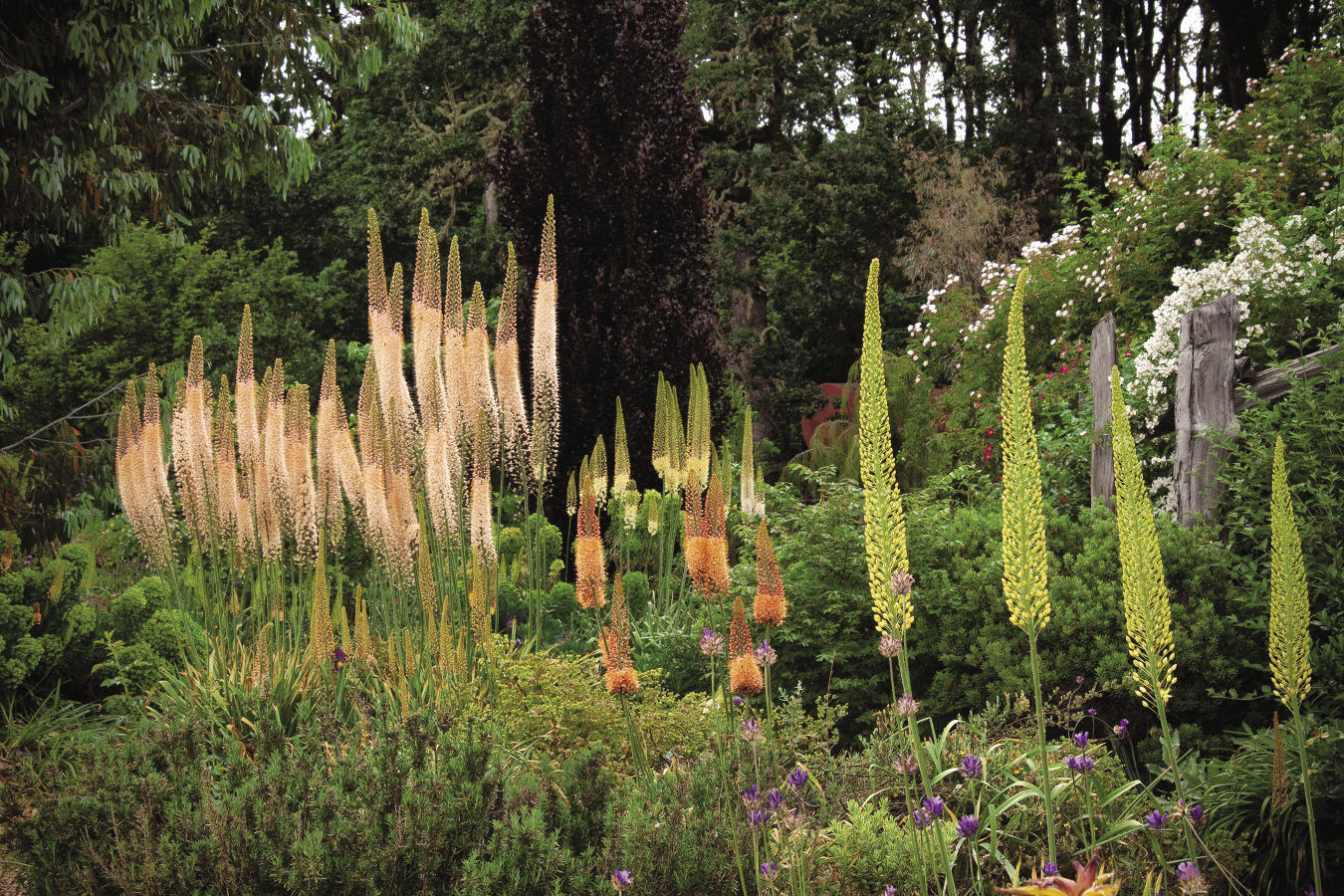
Plants with tall, dramatic flower spikes that tower over a landscape tend to hog the spotlight, leaving the rest of the garden to languish unnoticed. Soften this impact by choosing a mix of slender foxtail lilies, like ‘Pinokkio’ (Eremurus × isabellinus ‘Pinokkio’, Zones 5–8, center), and other peach-colored hybrids. Peach blooms still deliver the drama but without overpowering their companions.
Kick it up a notch
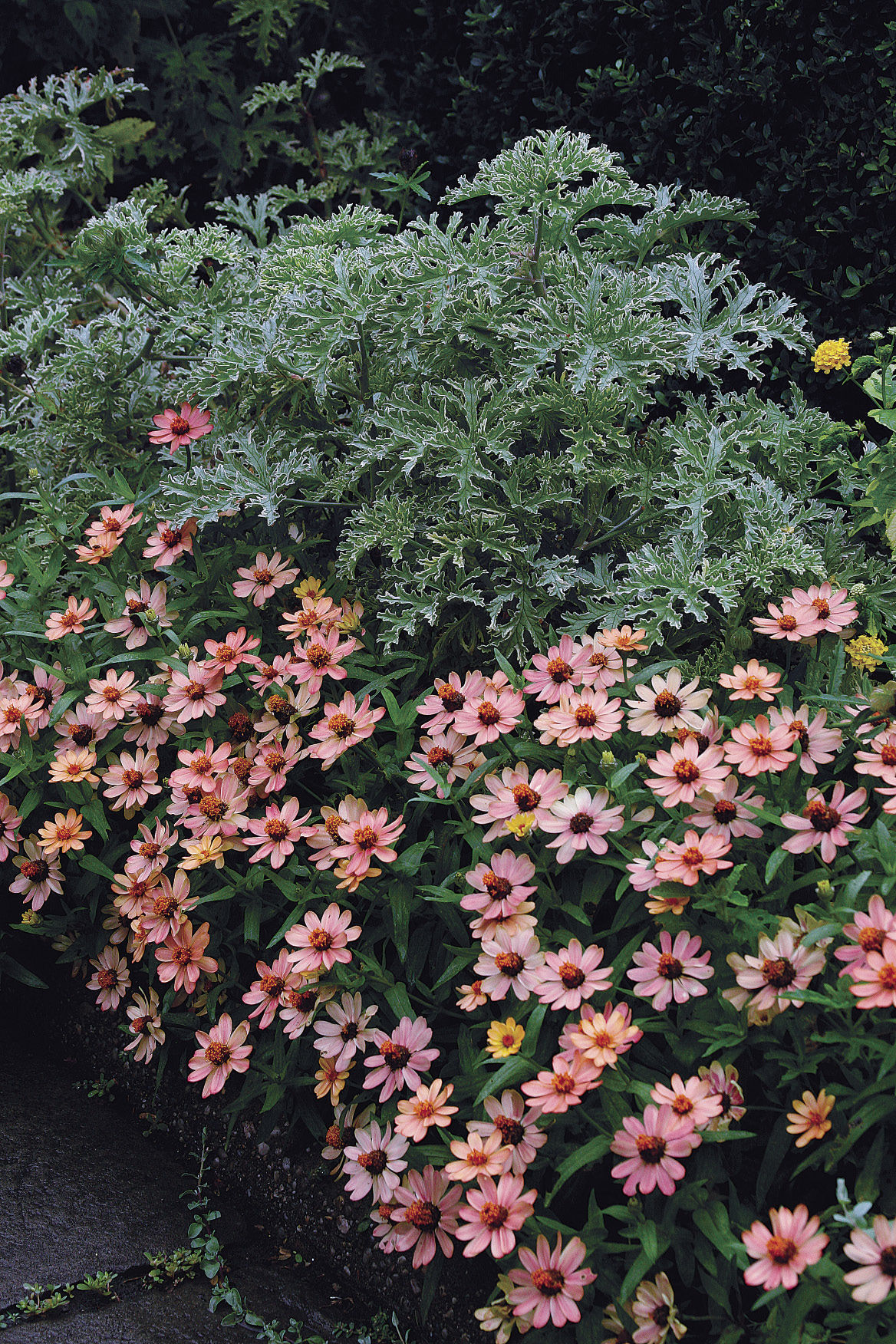
The quiet contrast that minty green foliage brings to a garden can be a tad too quiet at times. Set off the softly colored leaves of a subtly variegated scented geranium (Pelargonium cv., Zone 11) with the delicately tinted petals of ‘Profusion Apricot’ zinnia (Zinnia ‘Profusion Apricot’, annual). The result? A coolly elegant pairing that doesn’t fade into the background.
Wake up wallflowers
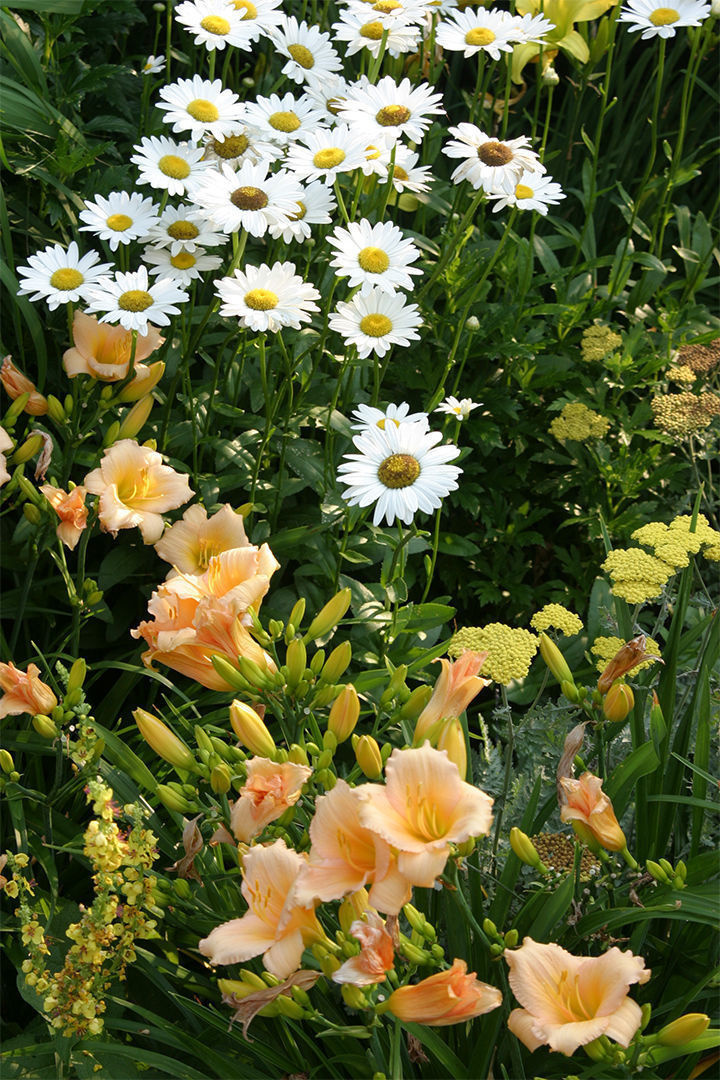
While perennial garden favorites, like white Shasta daisies (Leucanthemum × superbum cv., Zones 5–8) and yellow yarrow (Achillea millifolium cv., Zones 3–9), delight us with their old-fashioned charm, overuse can dull their appeal. The soft peach blooms of a daylily (Hemerocallis cv., Zones 3–10) inject a sophisticated note that transforms a simple, everyday pairing into one that is sweetly romantic.
Help bold colors blend
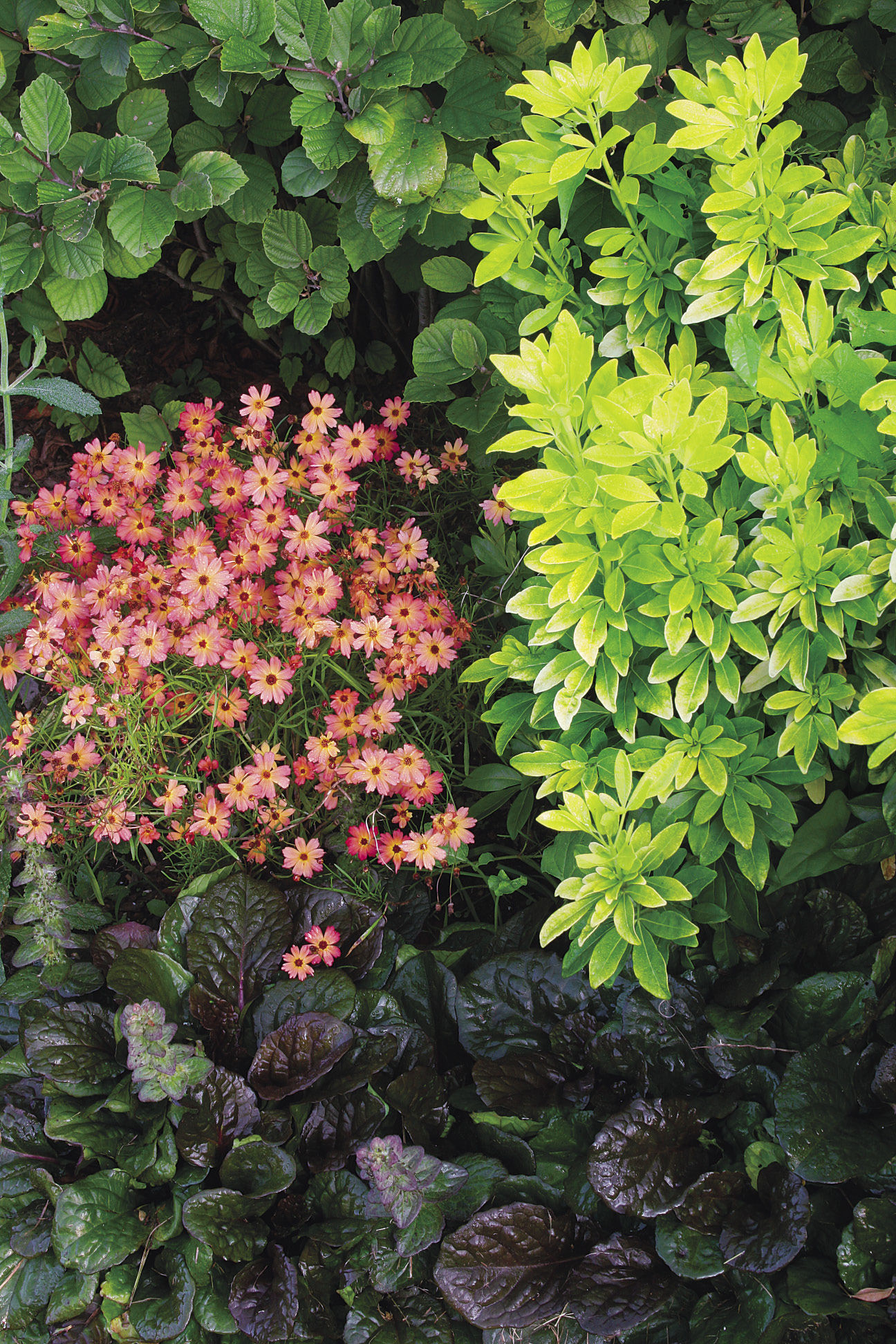
Think of peach as the tactful friend that keeps oversize garden personalities from acting out. The yellow tint in the petals of ‘Limerock Dream’ coreopsis (Coreopsis ‘Limerock Dream’, Zones 8–10) both echoes and quiets the boisterous chartreuse leaves of ‘Sundance’ Mexican orange blossom (Choisya ternata ‘Sundance’, Zones 8–10), while the slight blush of red helps tie in the burgundy-black foliage of ‘Catlin’s Giant’ ajuga (Ajuga reptans ‘Catlin’s Giant’, Zones 3–9). Thanks to peach, companion planting just got easier.
Flirt discreetly with foliage
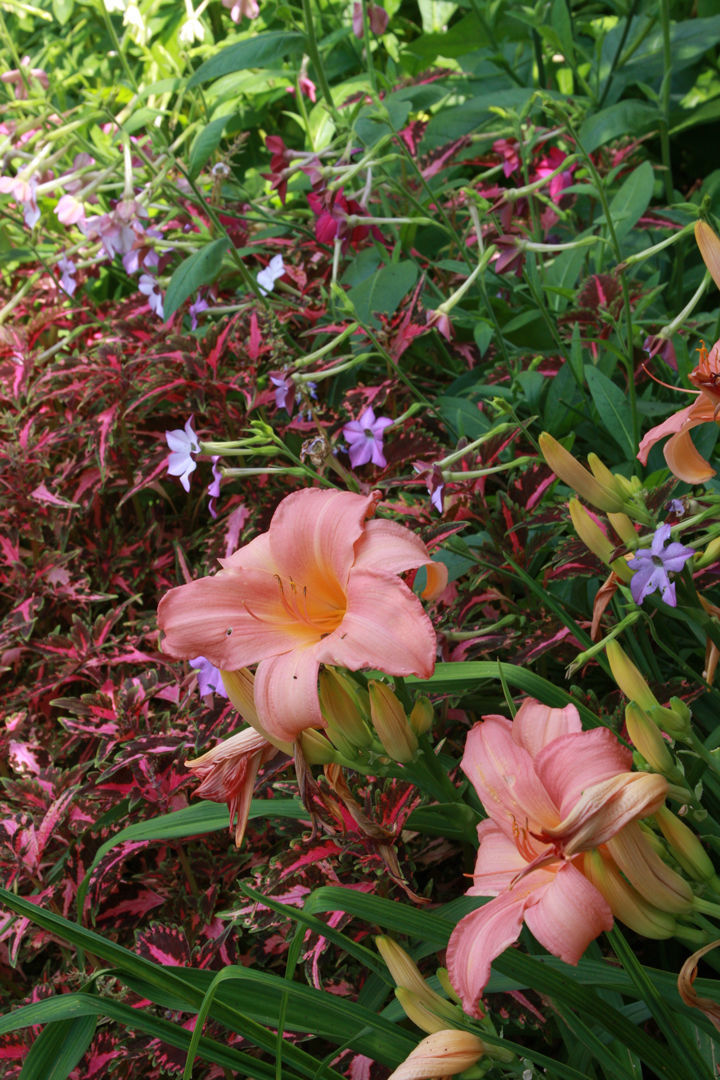
There’s a reason the little pink dress never became a wardrobe staple—this show-stopping color hovers right on the cusp between fabulously flashy and brazenly brassy. Tone down the shocking pink foliage of ‘Pink Chaos’ coleus (Solenostemon scutellarioides ‘Pink Chaos’, Zones 12–13) with a peachy daylily (Hemerocallis cv., Zones 3–10). The cotton-candy undertones on its blooms allow a peach-colored flower like this to keep brighter garden hues in check. The lavender flowering tobacco (Nicotiana × sanderae cv., annual) adds just a bit of pizzazz.
Keep colorful blooms in line
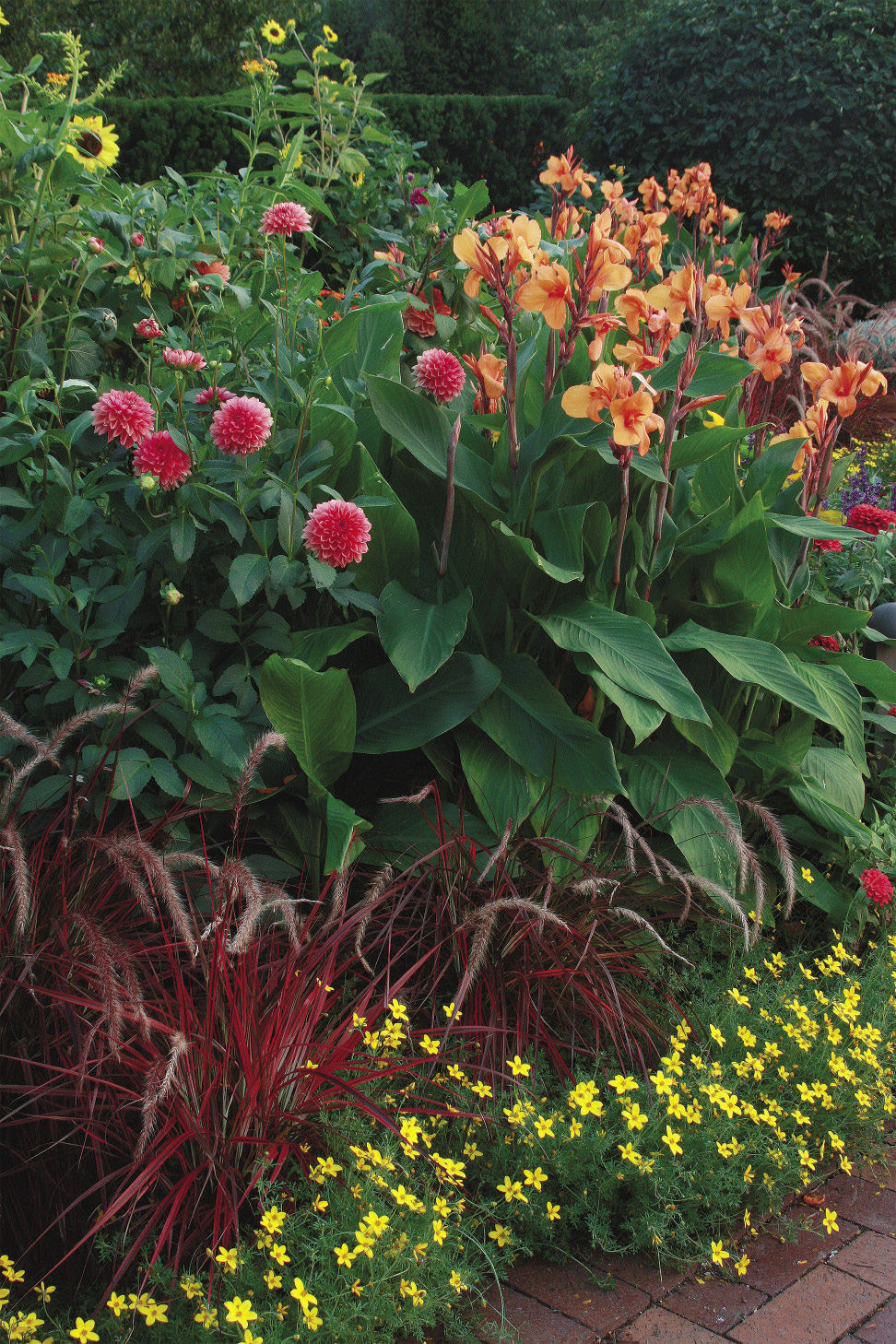
Fans of vibrant color know how tricky it can be tying together a smorgasbord of shades. A peachy ‘Tangelo’ canna (Canna ‘Tangelo’, Zones 8–11) comes to the rescue in this combo, encouraging yellow ‘Peter’s Gold Carpet’ bidens (Bidens ferulifera ‘Peter’s Gold Carpet’, Zones 8–11), deep pink ‘Intrigue’ dahlias (Dahlia ‘Intrigue’, Zones 9–11), and brightly striped ‘Fireworks’ fountain grass (Pennisetum setaceum ‘Fireworks’, Zones 8–11) to commingle happily. With peach on the job, there’s no need to back off from even the brightest of garden blooms.
Shine in a starring role

If all this talk of peacemaking and playing nice leads you to believe the color peach is destined for a permanent role as a supporting player, then think again. For a standout show, combine peach in a range of tones and textures with plants like flowering maple (Abutilon cv., Zones 8–11), ‘Sedona’ coleus (Solenostemon scutellarioides ‘Sedona’, Zones 12–13), and ‘Flamingo’ phormium (Phormium ‘Flamingo’, Zones 8–11). Peach really does go with everything—including more peach.
Peach flowers are easy to find
If you’ve been won over by peach and want to start using it in your garden, you might be hard-pressed to think of one peach-flowering plant off the top of your head. But the easiest place to start is with roses (Rosa spp. and cvs., Zones 2–11) and daylilies (Hemerocallis spp. and cvs., Zones 3–10). For some reason, breeders of these plants have embraced peach like there’s no tomorrow. Here are a few popular choices.
Roses
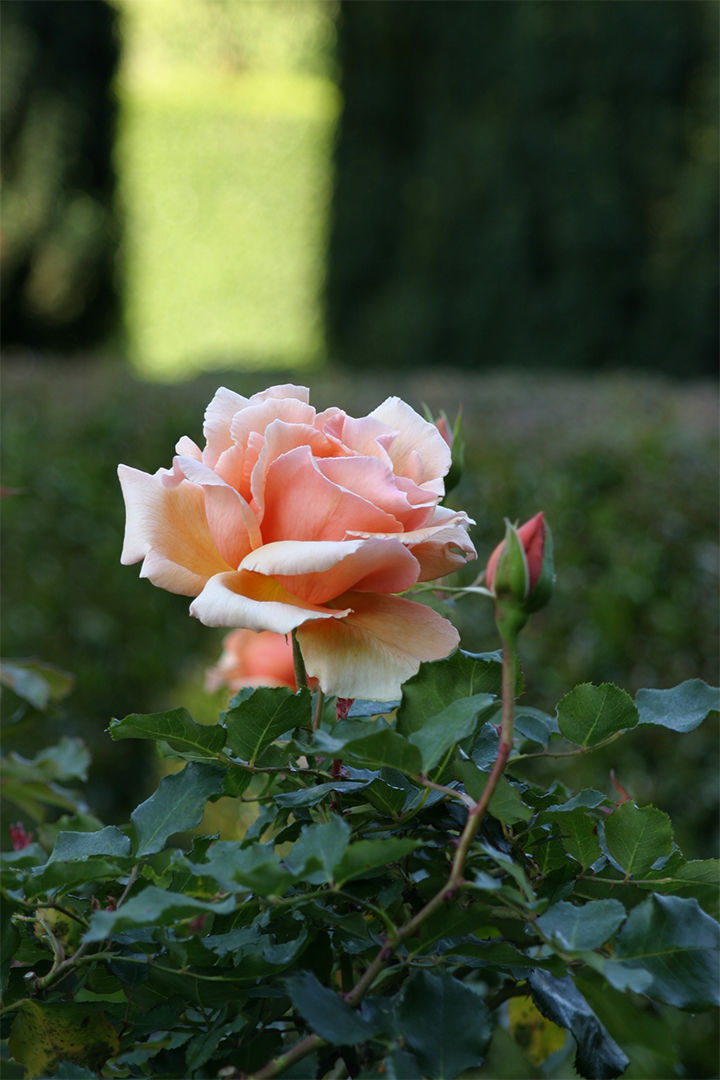
‘Just Joey’ |
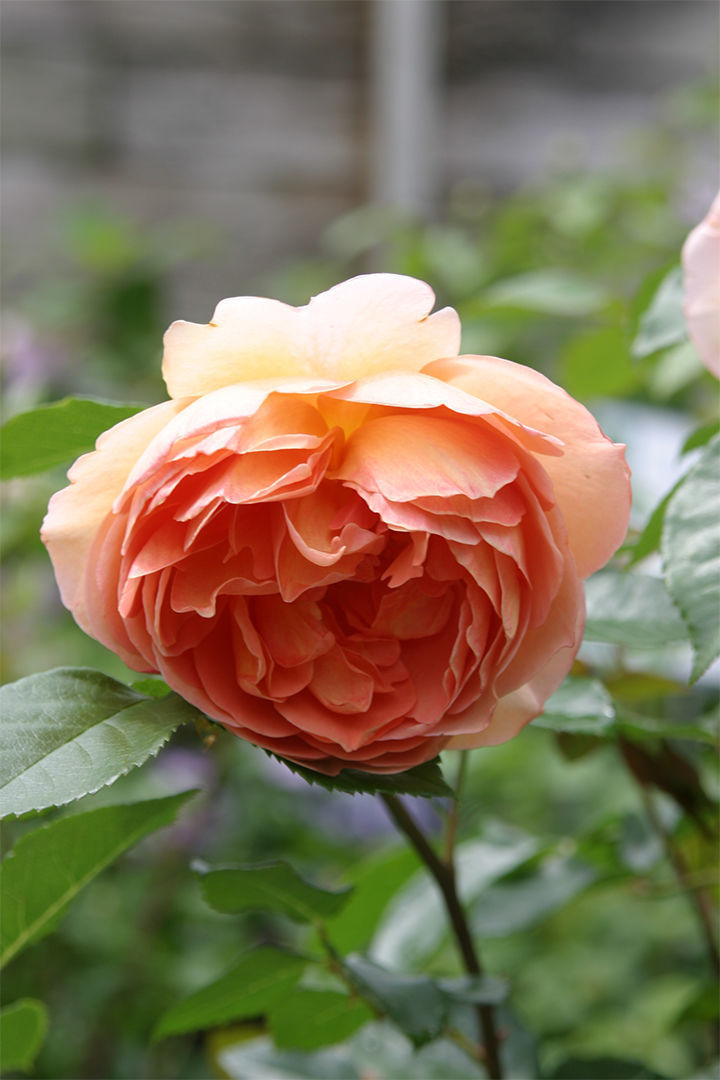
‘Pat Austin’ |

‘Soleil d’Or’ |
Daylilies
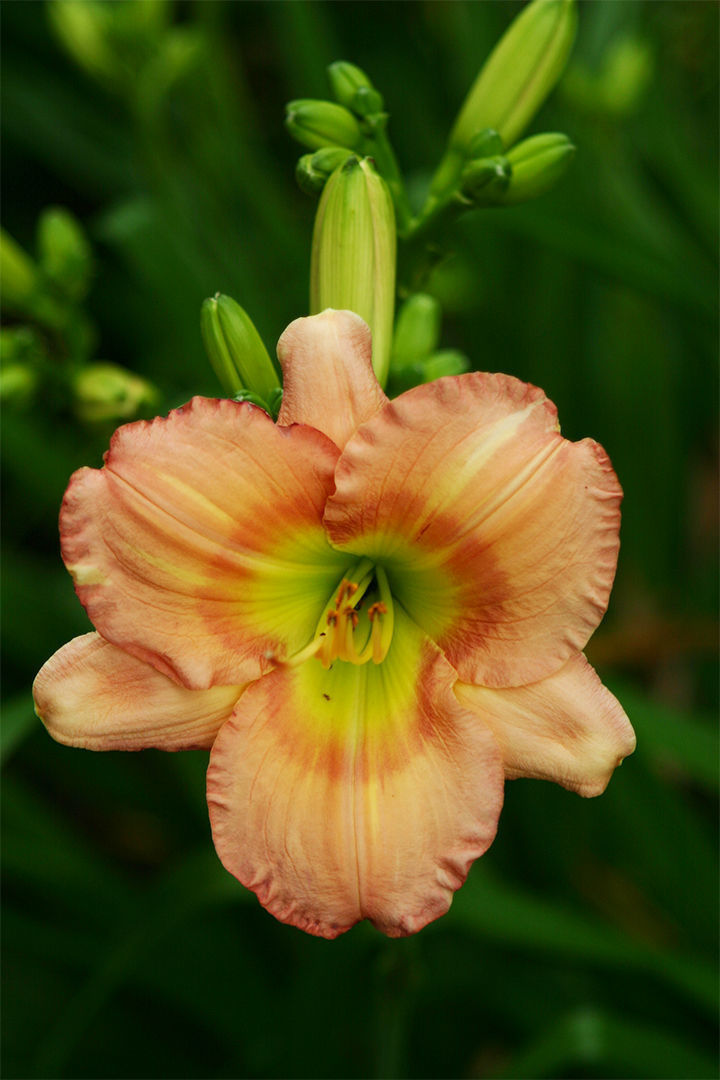
‘Chorus Line’ |

‘Jan’s Twister’ |

‘Rehab’ |
Susan Morrison is the owner of Creative Exteriors Landscape Design in Concord, California, and coauthor of Garden Up: Smart Vertical Gardening for Small and Large Spaces.
Photos: Michelle Gervais; Doreen Wynja; Stephanie Fagan; and Melissa Lucas


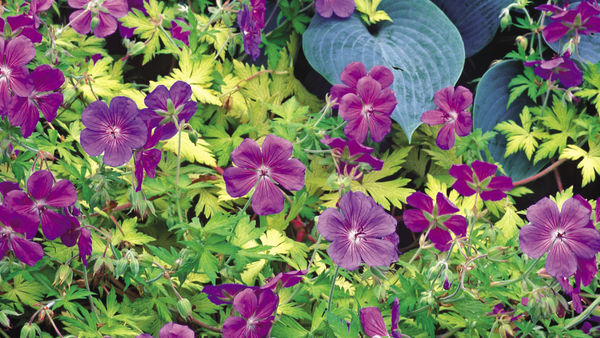
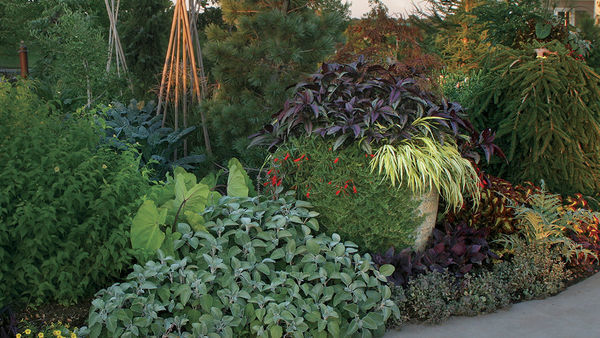













Comments
Log in or create an account to post a comment.
Sign up Log in